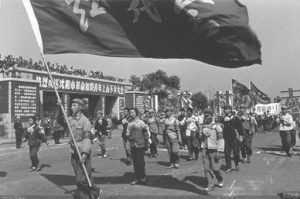The Up to the Mountains and Down to the Countryside Movement was a government policy in the People’s Republic of China during the 1960s and 1970s. From Wikipedia: “privileged urban youth [were] sent to mountainous areas or farming villages to learn from the workers and farmers there.”
A lot of economists and economic historians study aggregated data, e.g. gross domestic product, inflation, trade flows, or productivity.
Such a high level approach is valuable. However, the macro perspective by definition misses the details. A macroeconomist will typically explain productivity growth by referring to increases in (human) capital and total factor productivity. But how exactly do concrete changes lead to higher output?
For example, a comparison of Indian textile firms showed the immense impact of management on productivity. So we need to know what successful managers do differently. Most of this know-how is tacit knowledge, not documented by academics.
There is a blue ocean for economists who have firsthand business experience. A better understanding of value creation would be helpful for policy recommandations. For students who want to work outside the ivory tower, such practical knowledge is more useful than theoretical models of an idealized economy.
In a series of posts, I will tell you about some recent innovative practices that boosted my productivity as a banker.
Follow me to the corporate side!

